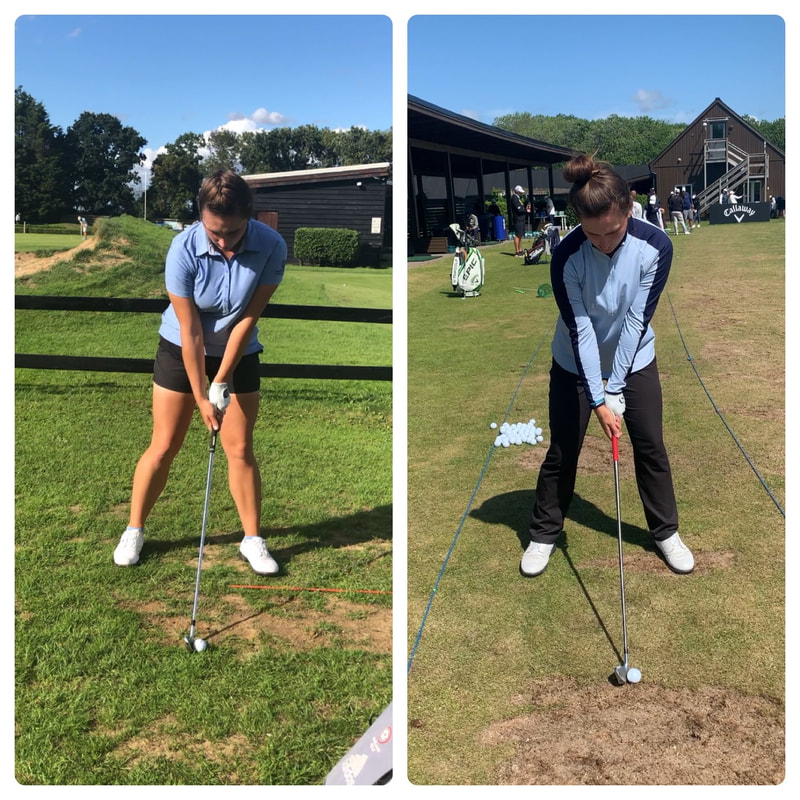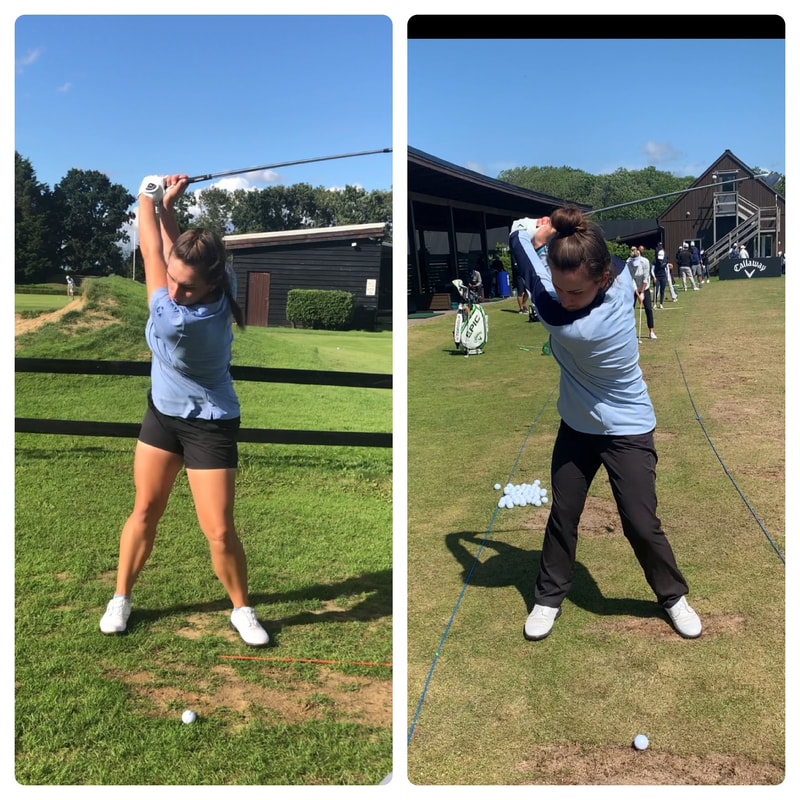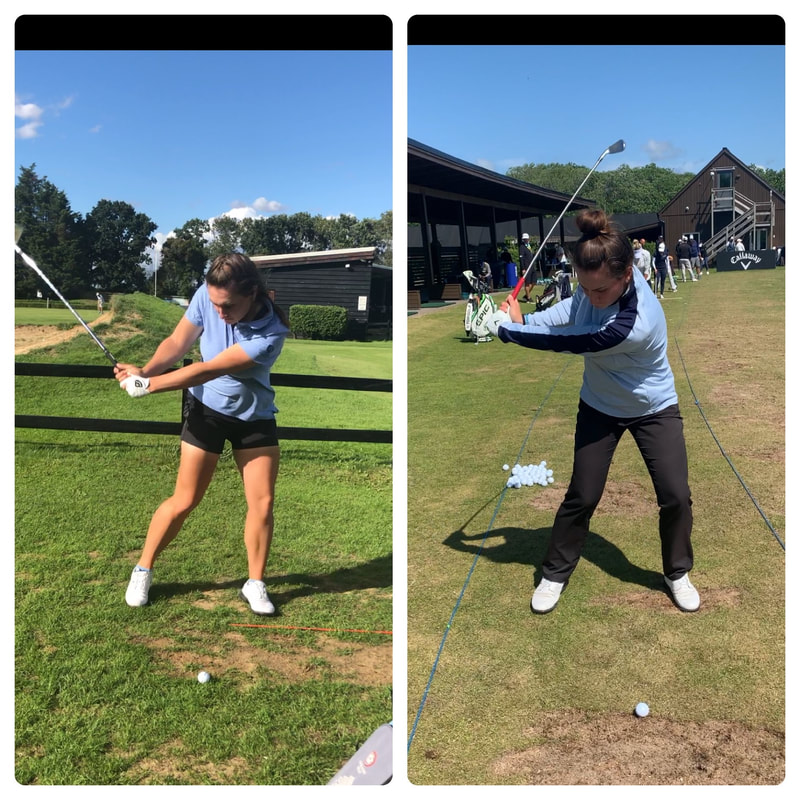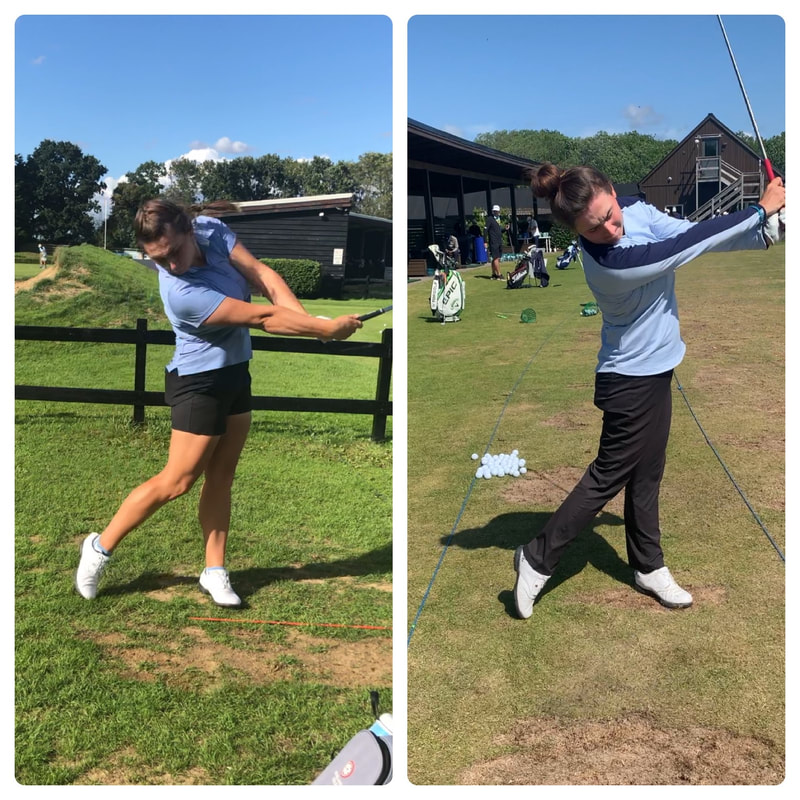Rebuilding a swing
Every day coaches are asked to help players for a variety of different reason, it could be a simple request to help cure a topped shot, or someone who wants to put the work in to get their handicap down. However, it is not every day you get asked to recover the swing of Britain’s number 1 amateur player, which is what I was asked to do in September 2020.
Lily May Humphreys and I worked tirelessly together for 9 month. Due to the COVID pandemic, and Lily’s status as an elite golfer, Lily and I could work together pretty much 6 days a week, and spend hundreds of hours going over and over the principles she needed to recover her swing.
By May 2021, Lily had gained her confidence to such a degree, that she was ready to turn Professional. It took her just 3 events to win her first professional tournament, the Golf Flanders LETAS trophy in Belgium with a total score of 10 under par. Since then Lily has gone on to secure her full ladies European tour card for the 2022 season.
Since Lily’s return to form, I have had quite a people ask me what we did in order to get her game back, so I decided to write this article to give people an insight into some of the things we worked on and changed. No player is immune to the pitfalls of getting lost in this game. My job was to give Lily a methodology that was simple and natural, and most importantly she understood and which felt good. Once a player has their methodology, it’s a simple case of maintaining and tuning it. This, in my opinion is key to being consistent from a technical point of view.
The pictures on the left are from September 2020, and the pictures on the right are ones I took in June 2021 at the mixed Scandinavian Masters in Sweden.
I hope you find it interesting, and maybe you will see something you can relate to in your own game.
Ball flight - Big loss of power and strike. Iron shots often hit heavy (ground first) and ball would over draw left of the target line.
Set up.
Every day coaches are asked to help players for a variety of different reason, it could be a simple request to help cure a topped shot, or someone who wants to put the work in to get their handicap down. However, it is not every day you get asked to recover the swing of Britain’s number 1 amateur player, which is what I was asked to do in September 2020.
Lily May Humphreys and I worked tirelessly together for 9 month. Due to the COVID pandemic, and Lily’s status as an elite golfer, Lily and I could work together pretty much 6 days a week, and spend hundreds of hours going over and over the principles she needed to recover her swing.
By May 2021, Lily had gained her confidence to such a degree, that she was ready to turn Professional. It took her just 3 events to win her first professional tournament, the Golf Flanders LETAS trophy in Belgium with a total score of 10 under par. Since then Lily has gone on to secure her full ladies European tour card for the 2022 season.
Since Lily’s return to form, I have had quite a people ask me what we did in order to get her game back, so I decided to write this article to give people an insight into some of the things we worked on and changed. No player is immune to the pitfalls of getting lost in this game. My job was to give Lily a methodology that was simple and natural, and most importantly she understood and which felt good. Once a player has their methodology, it’s a simple case of maintaining and tuning it. This, in my opinion is key to being consistent from a technical point of view.
The pictures on the left are from September 2020, and the pictures on the right are ones I took in June 2021 at the mixed Scandinavian Masters in Sweden.
I hope you find it interesting, and maybe you will see something you can relate to in your own game.
Ball flight - Big loss of power and strike. Iron shots often hit heavy (ground first) and ball would over draw left of the target line.
Set up.
Grip - The first change was that Lily had an incredibly strong right hand grip causing a closed club face. Lily loves drawing the ball, and I told her to embrace her draw, but we don’t want a two way miss (left and right) so by weakening the face it will help us not have a miss that crosses left of the target line.
Spine - You will see on Lily’s old set up, she is leaning onto her left foot. If a player is struggling with the strike, it’s not unheard of for the player to do something like this in order to try and hit the ball before the ground. However this is not what we want as it can cause issues with the backswing as you’ll see on the next image. To get Lily’s spine in the correct position, I simply got her to stand upright, and lean forward keeping her spine in a neutral position, the “tilt” in the shoulders would only then appear as her right hand is lower on the club than her left hand.
Spine - You will see on Lily’s old set up, she is leaning onto her left foot. If a player is struggling with the strike, it’s not unheard of for the player to do something like this in order to try and hit the ball before the ground. However this is not what we want as it can cause issues with the backswing as you’ll see on the next image. To get Lily’s spine in the correct position, I simply got her to stand upright, and lean forward keeping her spine in a neutral position, the “tilt” in the shoulders would only then appear as her right hand is lower on the club than her left hand.
Backswing
Spine - Having set up correctly, I wanted Lily to move more naturally in her takeaway. Lily had a lot of coaching previously on club positions, and I wanted her to have a better understanding of how the body “creates” the club positions.
So I didn’t want her to be too still in her first move, instead, let her spine gently move an inch or so to the right as she starts her takeaway. This is important to set her up for her downswing.
Arms - As I mentioned earlier, Lily had done a lot of work on club positions, and I felt this could be why her arms were becoming so dominant in her swing. In lily’s new swing we greatly reduced the amount of arm swing on the way back, which then kept her arms far more in time with her body turn.
Many amateur golfers struggle with this idea. For a right handed golfer it may help to think of the backswing as more of a turn and a fold of the right arm than a big arm “swing”. At the top of Lily’s new swing we created the “stretch” which would help her sequence her downswing much better.
So I didn’t want her to be too still in her first move, instead, let her spine gently move an inch or so to the right as she starts her takeaway. This is important to set her up for her downswing.
Arms - As I mentioned earlier, Lily had done a lot of work on club positions, and I felt this could be why her arms were becoming so dominant in her swing. In lily’s new swing we greatly reduced the amount of arm swing on the way back, which then kept her arms far more in time with her body turn.
Many amateur golfers struggle with this idea. For a right handed golfer it may help to think of the backswing as more of a turn and a fold of the right arm than a big arm “swing”. At the top of Lily’s new swing we created the “stretch” which would help her sequence her downswing much better.
Change of direction
This was one of the biggest differences in understanding for Lily. In Lily’s old swing, she was getting to the top of her swing and trying to turn left pretty much as quickly as she could. It’s an area of the swing that’s been spoken about in many books etc. We may have heard “turn left” or “unwind your hips”. Whilst this may have some truth in it, when misunderstood, it can ruin a swing as it had done here in the left picture.
As Lily approached the top of her backswing, we worked on feeling her left side/shoulder/arm would pull back down and towards the target as her spine also moved towards the target, this “pulling” would in turn “load” the left wrist into the more lagged position. So in Lily’s mind the “turn” came a bit later in the downswing. We also used a weighted training aid with a flexible shaft to help teach lily the correct sequence and feeling in the transition from backswing to downswing.
We also changed lily’s irons to lighter, and slightly more flexible shafts to help her feel this movement much better.
As Lily approached the top of her backswing, we worked on feeling her left side/shoulder/arm would pull back down and towards the target as her spine also moved towards the target, this “pulling” would in turn “load” the left wrist into the more lagged position. So in Lily’s mind the “turn” came a bit later in the downswing. We also used a weighted training aid with a flexible shaft to help teach lily the correct sequence and feeling in the transition from backswing to downswing.
We also changed lily’s irons to lighter, and slightly more flexible shafts to help her feel this movement much better.
Release
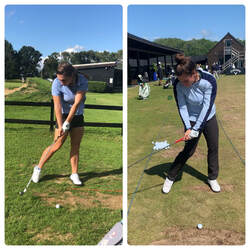
This next position is largely a consequence of what went before. To encourage the correct release, and angle of attack, I would get Lily to practice off bare mud, or even out of fairway bunkers. When she practiced at home with her wedges, her Dad would put sand on the lawn to mimic a fairway bunker shot. Initially this was very difficult for Lily, but as her swing improved along with her understanding, she became brilliant at striking it off any lie.
Follow Through
Follow Through
Lily had previously injured her left wrist a few times due to this movement. She had tried exceedingly hard to stop her hands “flipping” through Impact. I wanted Lily to understand that what happens at impact is mainly a consequence of what’s happened before. A “flip” with the hands is often a sign of someone saving the shot. There is a huge amount of intuition with regards to the club face control in the downswing, and I don’t believe it’s as simple as simply stopping your wrists flipping, as at the end of the day, the arms and club do rotate through impact. So Lily’s new way of looking at her downswing was to deliver the club well, then release it, rather than deliver the club poorly and try and hold the face square in an attempt to save the shot.
I am very proud of the work Lily and I have done together in such a short amount of time to rebuild her swing. The week before the right video was taken she told me “this is the best I have ever hit it”. And she went on to win two weeks later. I look forward to watching her career progress.
